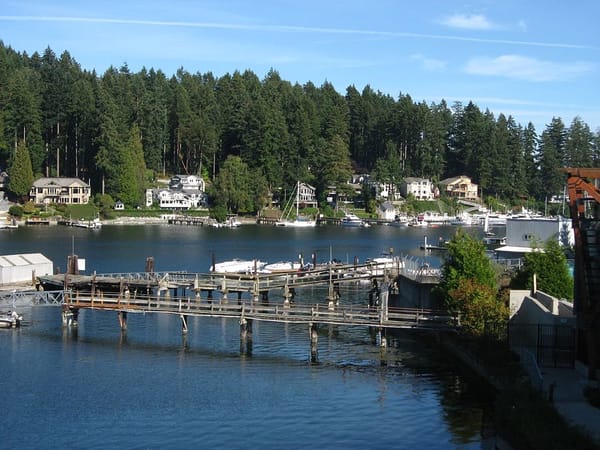Saving the Surface: All About Wax, Sealant and Ceramic Coatings
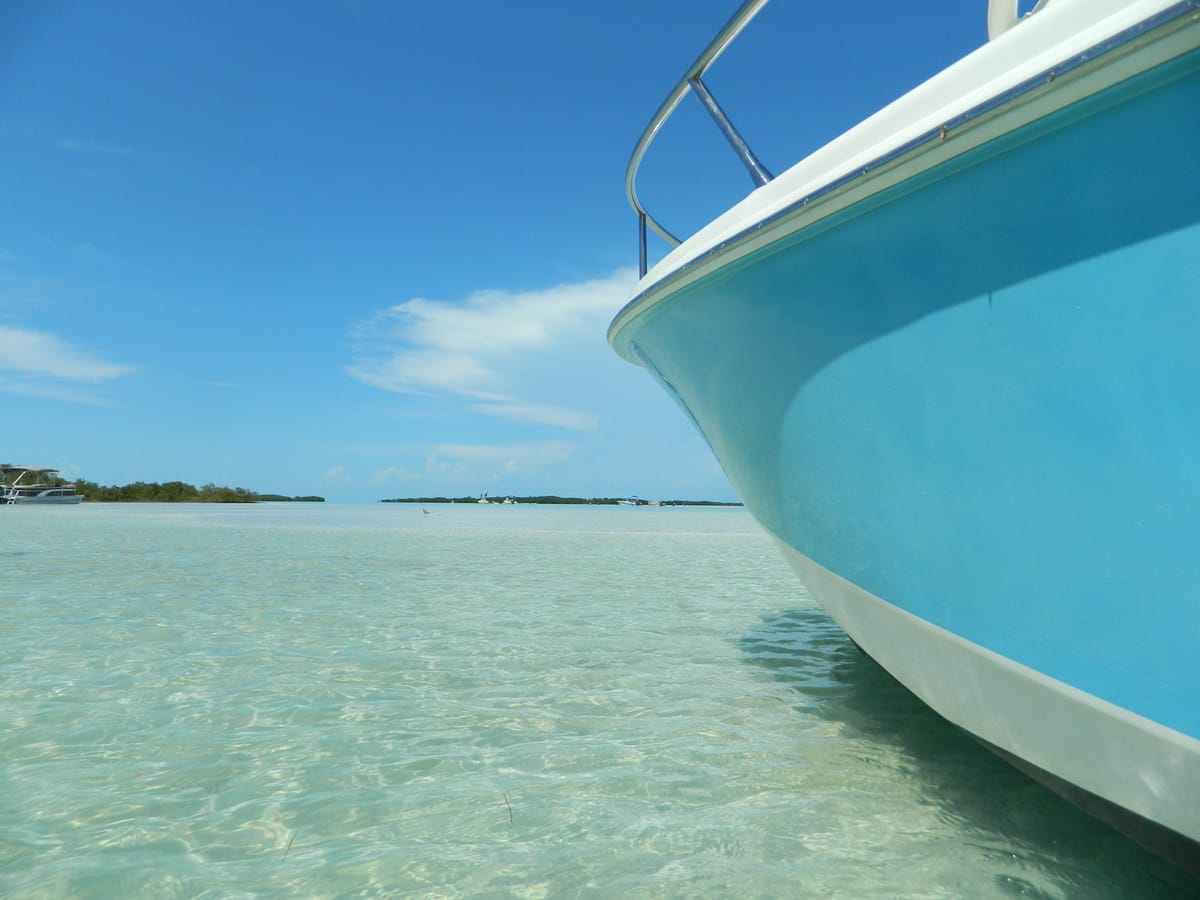
A sleek and shiny finish helps your boat glide through the waterways. It will also make you the envy of other boaters (and that can only be a bonus in our opinion). Unfortunately, there’s no such thing as a boat fairy to magically clean and coat your boat.
To provide protection and repel water, a durable and top-of-the-line coating is crucial to the lifespan of your boat. Fiberglass hulls are typically covered in a gel coat (which delivers UV protection and durability). The gel coat, which is porous and can stain, also needs a layer of protection for cleanliness and a shiny outlook. This is where coatings like wax, sealant or ceramic come into play.
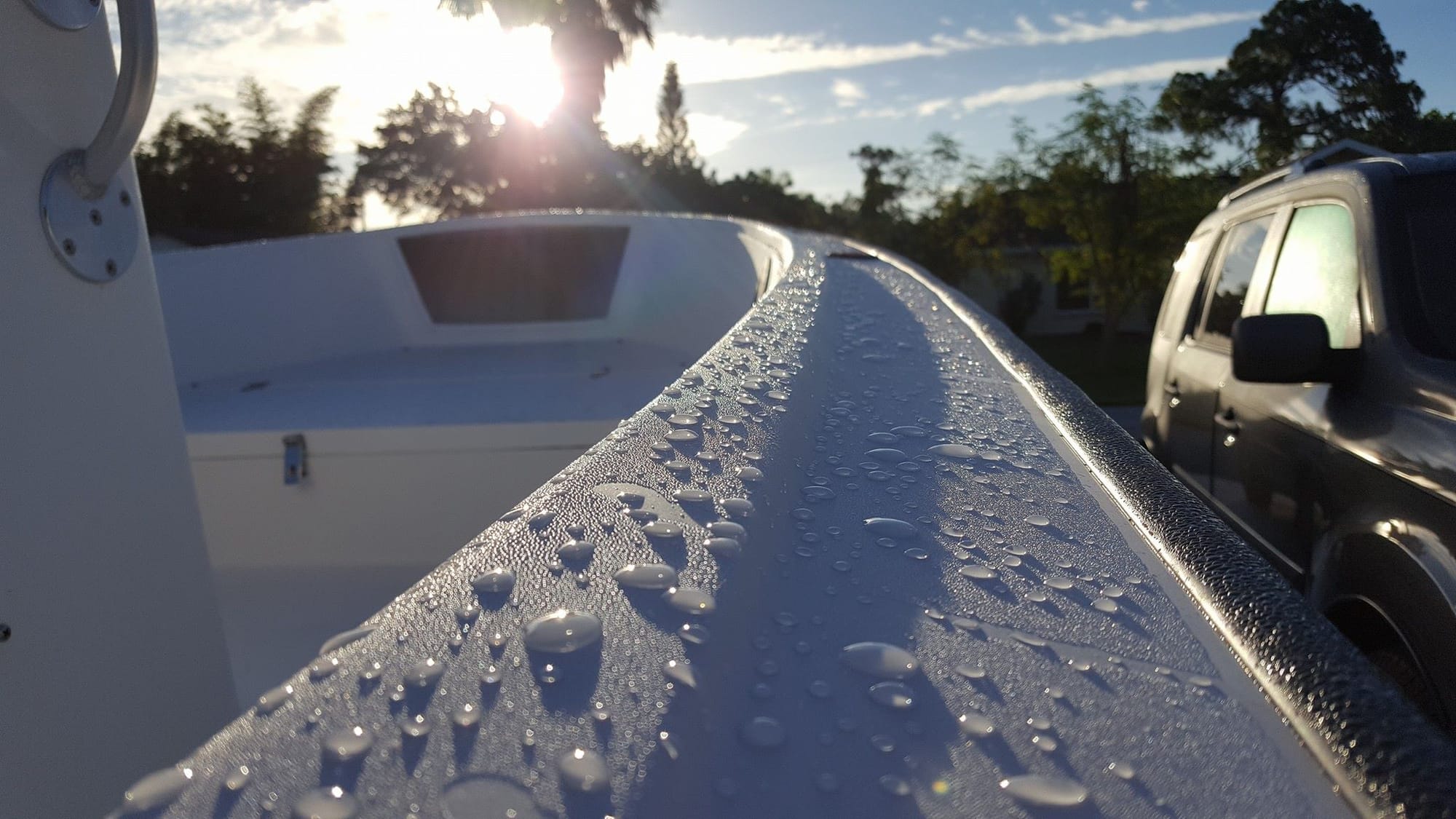
Keep reading to discover the low-down on all three types, whether you’re applying it yourself in your driveway or at a private boat dock rental or leaving the job to a professional.
Wax Coating
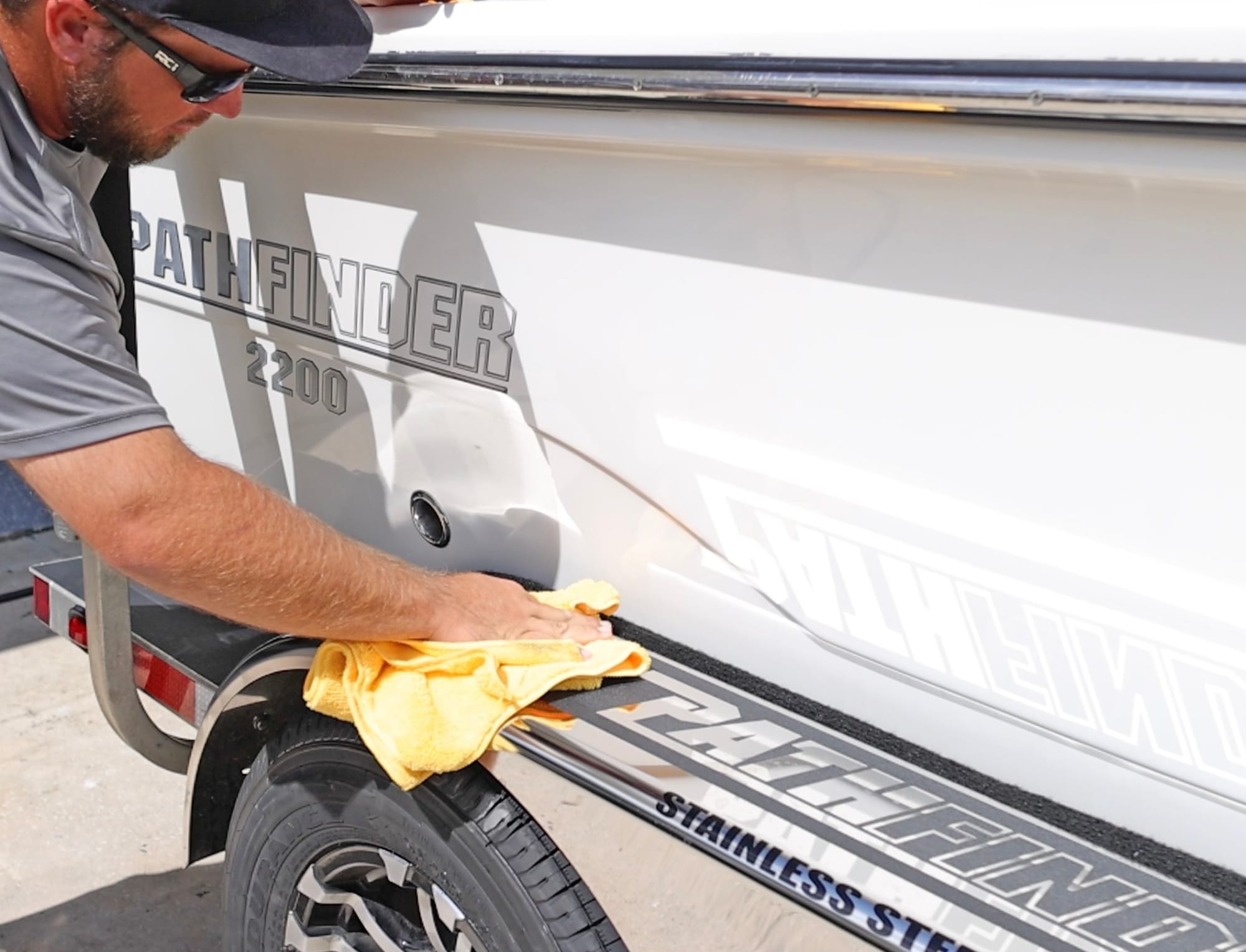
Wax coatings on boats serve as a crucial element in boat maintenance, offering protection and enhancing the vessel's appearance. Here’s an overview of their benefits and application.
Purpose and Benefits
- Protection Against UV Rays - The sun's ultraviolet (UV) rays can be extremely harsh on a boat's gel coat, causing oxidation, fading and chalking over time. A wax coating acts as a barrier that reflects UV rays and reduces their harmful effects.
- Water Repellency - Wax creates a hydrophobic surface on the boat, causing water to bead up and run off easily. This reduces water spots, minimizes algae and grime build-up and helps maintain the boat's aesthetic appeal.
- Ease of Cleaning - With a wax coating, dirt, salt and other contaminants are less likely to adhere to the boat's surface. This makes cleaning easier and less frequent, as grime can often be rinsed off without heavy scrubbing. It’s easy to hose off at the marina or private boat slip for rent.
- Enhanced Appearance - A well-waxed boat has a glossy and polished finish that enhances its color and overall look. The wax fills in minor scratches and imperfections, providing a smooth and reflective surface that looks professionally maintained.
- Prevention of Oxidation - Oxidation is a common problem for boats, especially those exposed to harsh marine environments. A good wax coating helps to slow down the oxidation process, preserving the boat's gel coat and overall condition whether it’s stored inside, in a boat yard or at a private boat lift rental.
Types of Wax
- Carnauba Wax - Derived from the leaves of the carnauba palm, this natural wax offers a deep shine and excellent water repellency. It’s often considered the gold standard for boat waxes but may require more frequent reapplication compared to synthetic waxes.
- Synthetic Polymer Wax - These waxes are engineered to provide longer-lasting protection than natural waxes. They bond more effectively with the boat’s surface and are generally more durable, especially in harsh environments.
- Hybrid Waxes - A combination of natural and synthetic ingredients, hybrid waxes aim to deliver the best of both worlds … superior shine from natural waxes and enhanced durability from synthetic components.
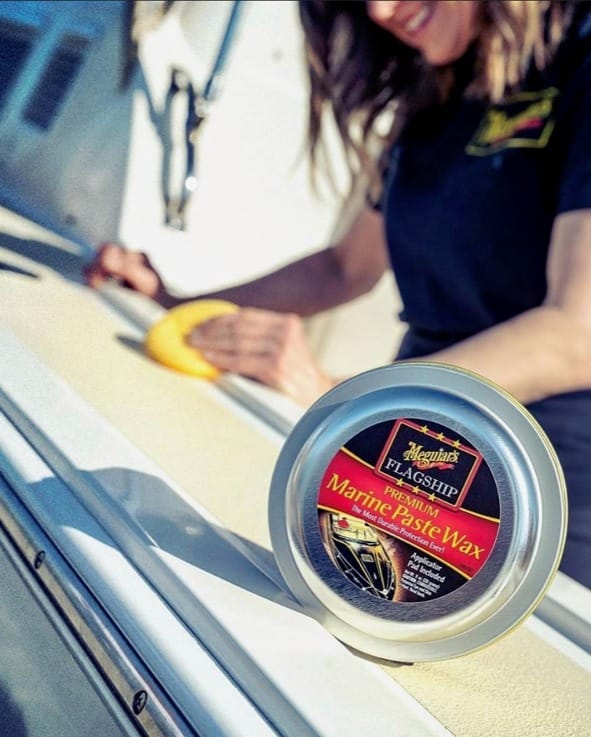
Application Process
- Surface Preparation - Before applying wax, the boat’s surface should be thoroughly cleaned to remove any dirt, grime and salt deposits. In some cases, it may be necessary to use a boat polish to remove oxidation and restore the gel coat before waxing.
- Wax Application - Wax can be applied by hand using a soft cloth or with a machine buffer. It’s important to work in small sections, applying the wax in a circular motion and allowing it to haze before buffing it.
- Buffing - Once the wax has hazed over, it should be buffed off with a clean soft cloth or a polishing machine. This step is crucial for achieving a smooth and glossy finish.
- Frequency - Depending on the wax type and environmental conditions, a boat should be waxed every 3-6 months to maintain optimal protection and appearance. It’s something that can be done in your driveway, at a private boat lift rental or in a boat storage yard.
Maintenance Tips
- Regular Washes - Regular washing with fresh water and mild soap helps to extend the life of the wax coating.
- Storage - Storing the boat under cover or in a garage will also help preserve the wax finish and reduce the frequency of reapplication.
- Spot Touch-ups - For high-wear areas or spots that are exposed to more harsh elements, consider doing spot touch-ups between full waxing sessions.
Sealant Coating
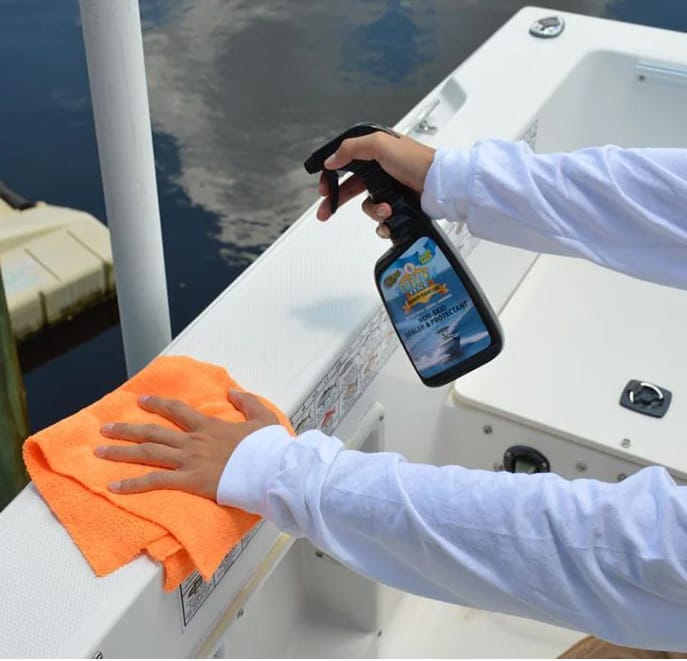
Sealant bonds to the surface of the boat and protects against UV rays and saltwater oxidation. This type of coating lasts quite a bit longer than wax and gives a clear and hard surface. It can be used on stainless steel and aluminum. It does take longer to apply.
Sealant coatings are essential for maintaining and protecting a boat's exterior, especially its hull. These coatings help to protect the boat from harsh marine environments, including saltwater, UV rays and general wear and tear.
Here’s an overview of sealant coatings and their importance for boats stored at marinas, boat yards or private boat dock rentals.
Purpose of Sealant Coatings
- Prevent Water Ingress - Sealants help to keep water from penetrating the hull, which can lead to rot, rust or other forms of degradation.
- UV Protection - They protect against ultraviolet (UV) damage, which can cause fading, cracking or chalking of the boat’s surface over time.
- Enhanced Durability - Sealants can extend the lifespan of the boat’s materials by providing an additional layer of protection against scratches, abrasions and impacts.
- Aesthetic Appeal - A good sealant can enhance the boat's appearance, giving it a glossy and well-maintained finish.
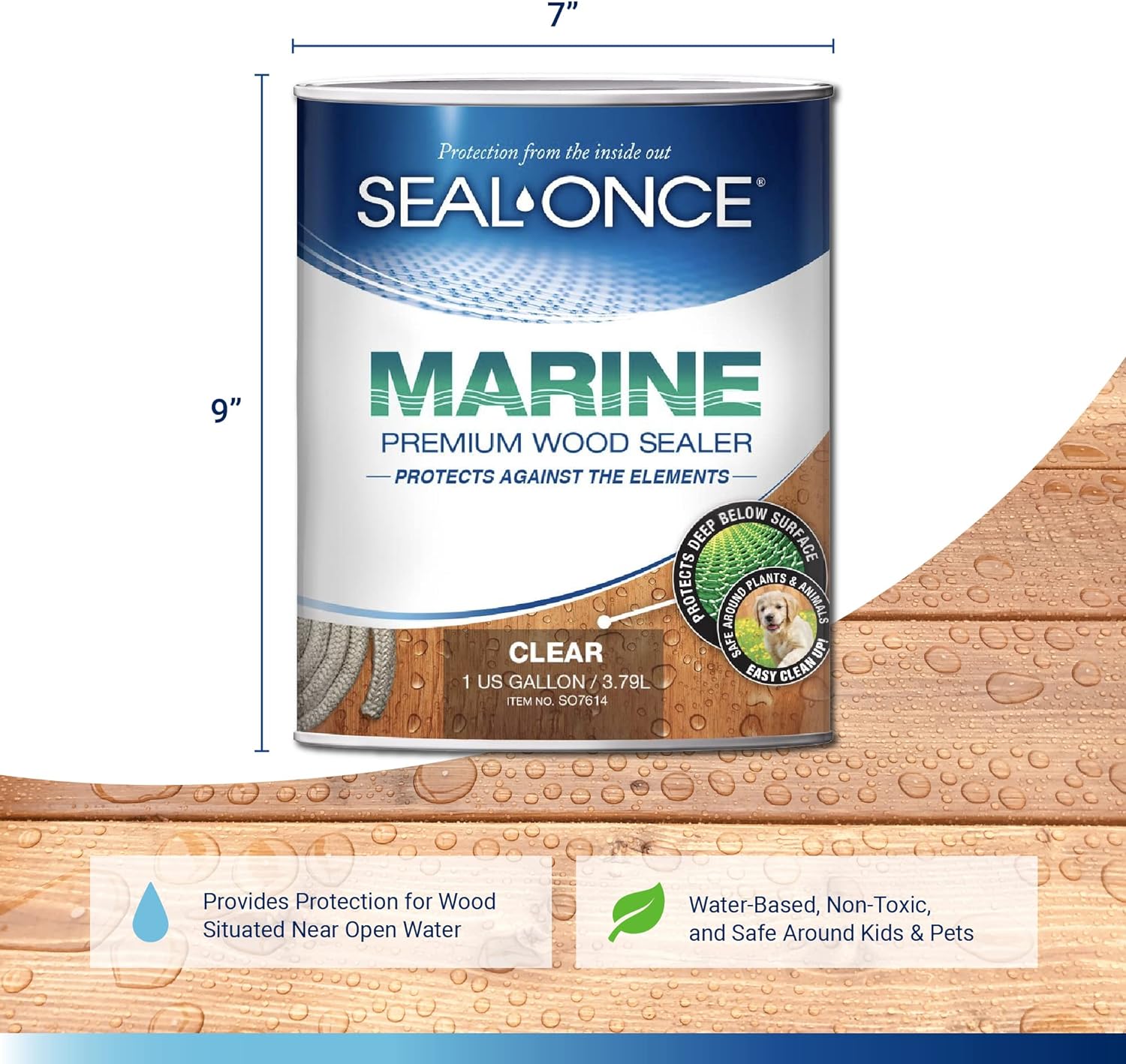
Types of Sealant Coatings
There are several types of sealant coatings available, each with its specific applications and benefits.
- Polyurethane Sealants - These are durable and flexible, providing excellent adhesion to various surfaces like fiberglass, wood and metal. They’re ideal for areas exposed to significant movement or stress, such as a boat that’s stored in-water at a private boat slip for rent.
- Silicone Sealants - Known for their flexibility and waterproofing properties, silicone sealants are often used around windows, hatches and other areas requiring a watertight seal. However, they are not as durable as polyurethane and may not adhere as well to certain surfaces.
- Epoxy Sealants - These are used for more permanent and structural repairs. Epoxy sealants are strong and durable, making them suitable for filling cracks or bonding materials.
- Acrylic Sealants - These are typically used for above-waterline applications. They’re paintable and easy to clean up, but they may not be as durable as other types of sealants.
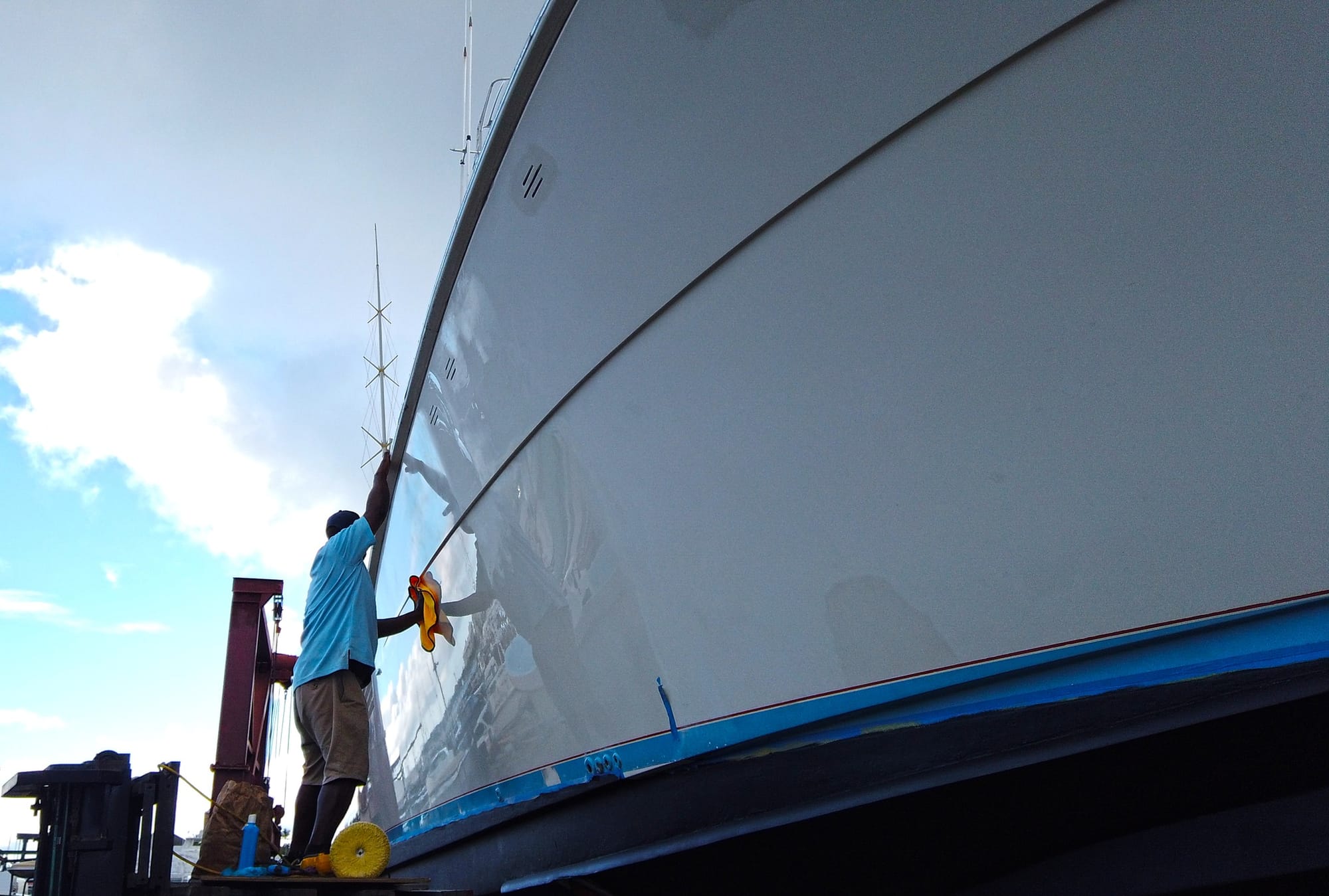
Application of Sealant Coatings
Applying a sealant coating requires careful preparation and attention to detail.
- Surface Preparation - The surface must be clean, dry and free of contaminants like oil, grease or old sealant residue. Sanding may be necessary to ensure proper adhesion.
- Application Method - Sealants can be applied using brushes, rollers or spray equipment, depending on the type of sealant and the area being treated. It's important to follow the manufacturer’s instructions for the best results.
- Curing Time - After application, the sealant needs time to cure fully. This can range from a few hours to several days, depending on the product and environmental conditions.
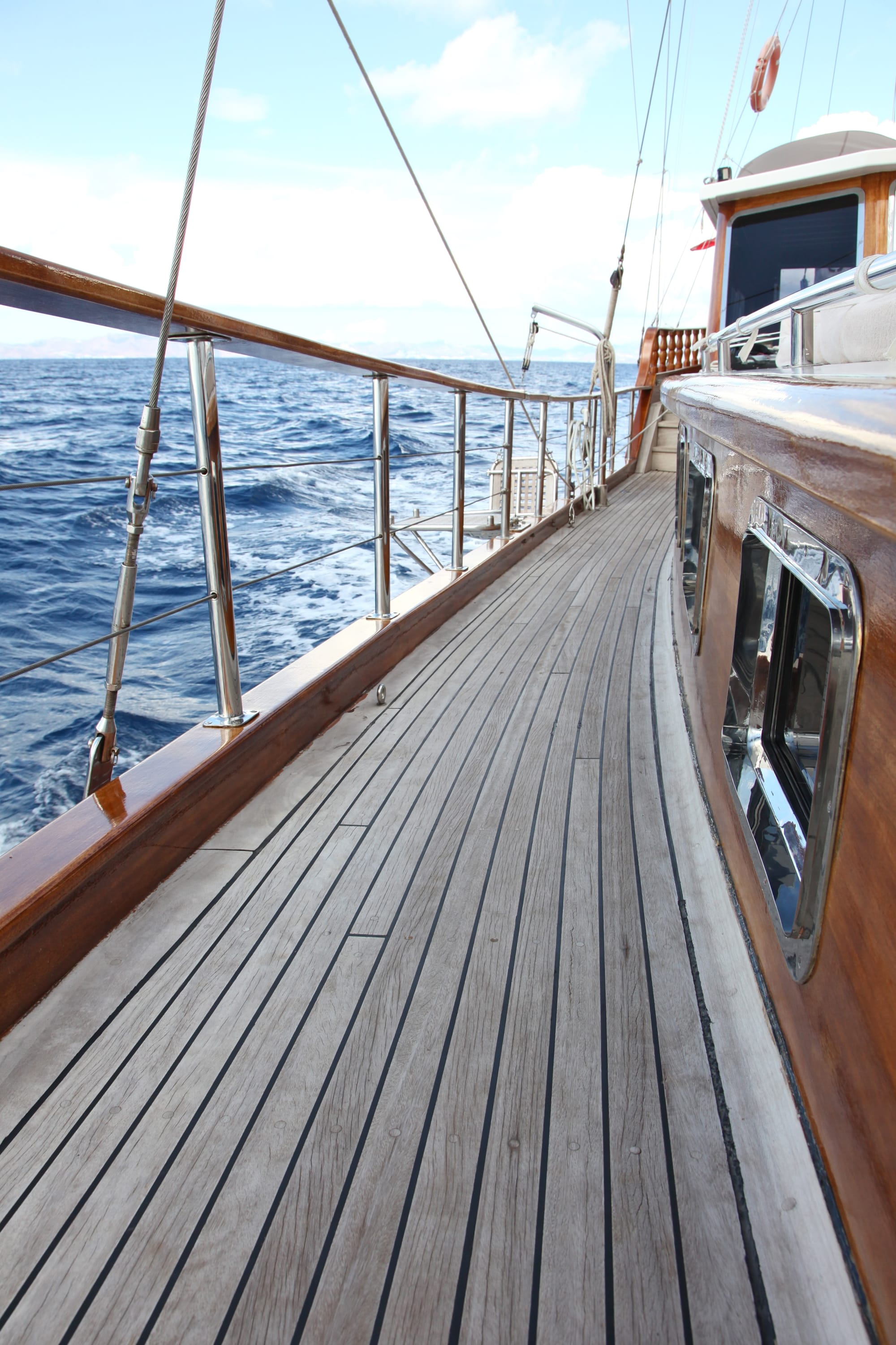
Maintenance of Sealant Coatings
Regular maintenance is crucial to ensure the longevity of the sealant coating.
- Inspection - Regularly inspect the boat for signs of wear, cracking or peeling of the sealant. Address any issues immediately to prevent further damage.
- Cleaning - Use appropriate cleaning products that won’t degrade the sealant. Avoid abrasive cleaners or tools that could scratch or damage the coating.
- Reapplication - Over time, sealants may need to be reapplied, especially in high-wear areas or after prolonged exposure to harsh conditions, such as being stored outside at home, at a boatyard or at a private boat lift rental.
Choosing the Right Sealant
Selecting the right sealant depends on various factors.
- Material Compatibility - Ensure the sealant is compatible with the boat’s materials (fiberglass, wood, metal, etc.).
- Environmental Conditions - Consider the type of water (saltwater vs. freshwater), temperature fluctuations and UV exposure when choosing a sealant.
- Application Area - Different sealants are designed for different parts of the boat (hull, deck, joints, etc.), so choose accordingly.
Ceramic Coating

Ceramic coatings have gained popularity in recent years as a protective solution for marine vessels. These coatings are made from nanotechnology-based materials, typically silica or silicon dioxide, which bond to the boat's surface to form a durable and protective layer.
The primary benefits of ceramic coatings on boats include protection, ease of maintenance and enhanced aesthetics. Ceramic coating is semi-permanent and lasts longer than both wax and sealant.
Benefits of Ceramic Coatings
Protection Against Environmental Factors
- UV Protection - Ceramic coatings provide a robust shield against UV rays, which can cause oxidation and fading of the boat's gel coat or paint over time. This UV protection helps maintain the boat's appearance and prevents premature aging.
- Corrosion Resistance - With saltwater and other corrosive elements constantly attacking a boat's surface, marine environments are harsh. Ceramic coatings create a barrier that resists corrosion, preventing damage to metal, fiberglass and painted surfaces.
Ease of Maintenance
- Hydrophobic Properties - One of the standout features of ceramic coatings is their hydrophobic nature. Water, along with dirt and grime, beads up and rolls off the surface, making the boat much easier to clean. This reduces the need for frequent washing and minimizes the use of harsh cleaning chemicals.
- Stain Resistance - Ceramic coatings protect against stains from bird droppings, oil and other contaminants. These substances are less likely to adhere to the coated surface, and when they do, they can be removed with minimal effort.
Enhanced Aesthetics
- Gloss and Shine - Ceramic coatings enhance the boat's appearance by providing a deep and glossy finish that can make the colors pop. This shine not only looks great but also lasts longer compared to traditional waxes.
- Smooth Surface - The coating fills in microscopic imperfections in the boat's surface, resulting in a smoother finish. This smoothness not only improves aesthetics but can also reduce drag in the water, potentially improving the boat's performance.
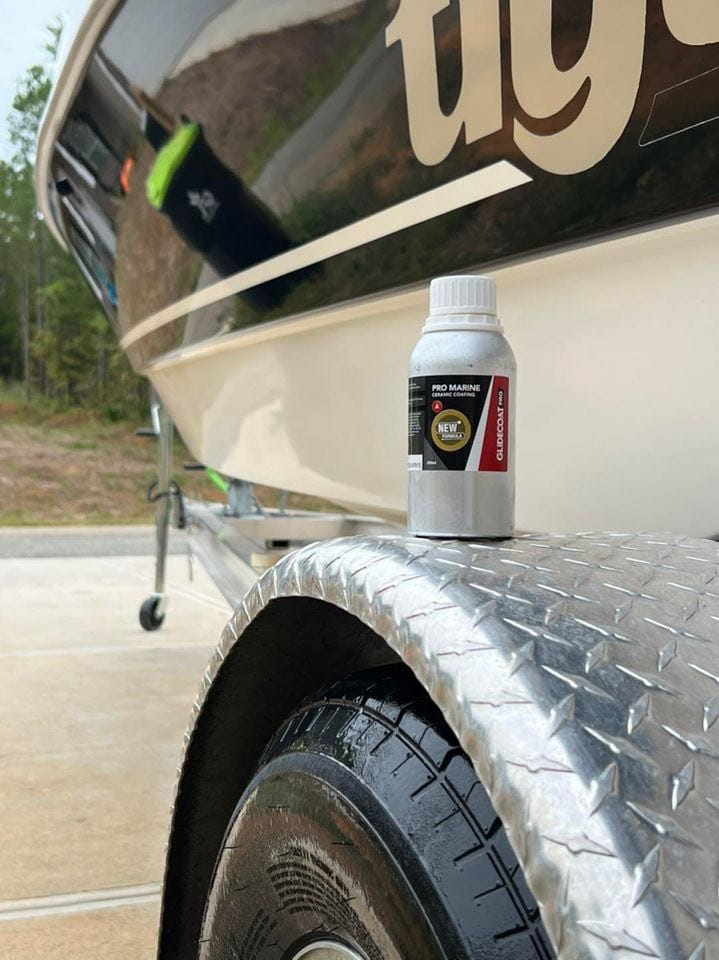
Application Process
Applying a ceramic coating to a boat is a meticulous process that requires careful preparation. The boat's surface must be thoroughly cleaned and, in some cases, polished to remove any oxidation, stains or imperfections that may pop up at a private boat dock rental or marina.
Once the surface is clean and smooth, the ceramic coating is applied in thin layers using an applicator pad or spray. After application, the coating needs time to cure, usually ranging from a few hours to a few days, depending on the product.
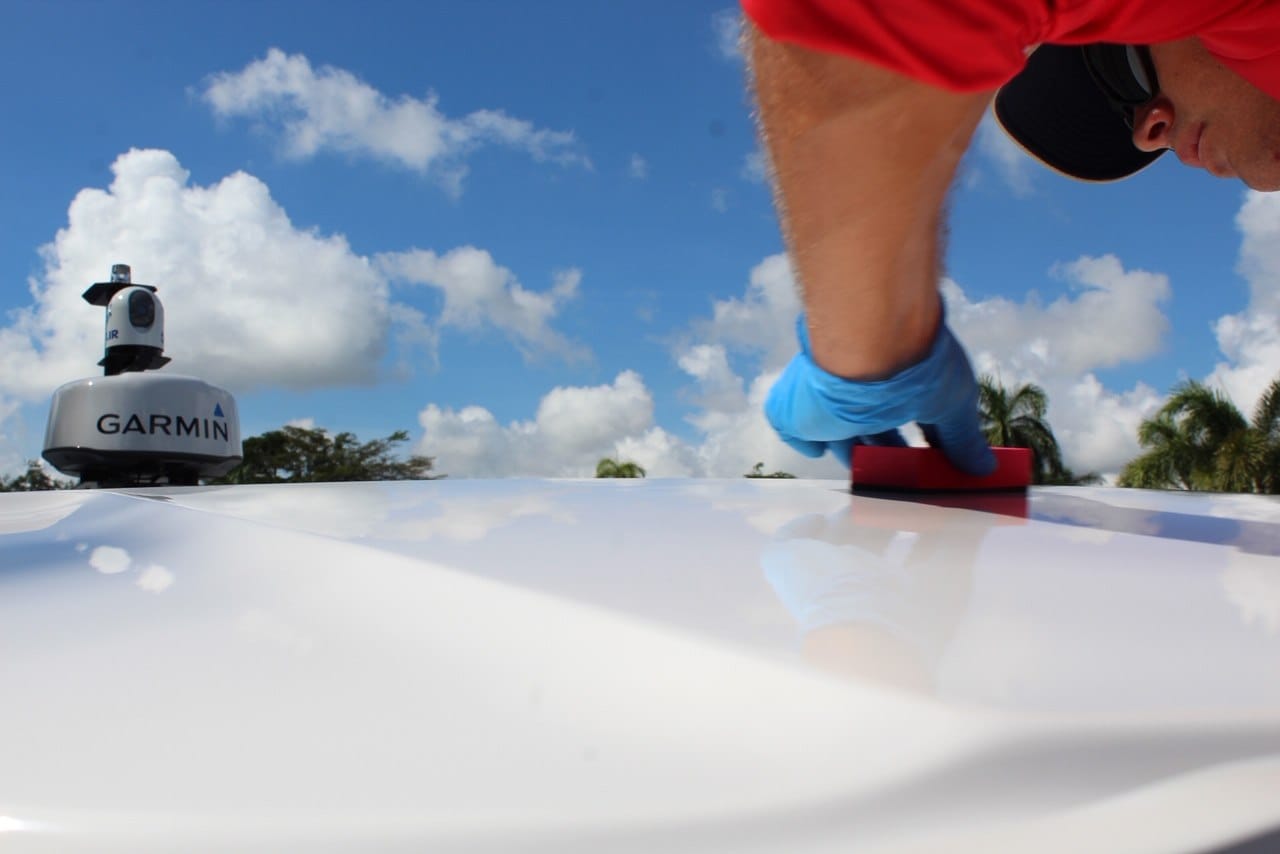
Longevity and Maintenance
Ceramic coatings are known for their durability, often lasting several years with proper care. However, regular maintenance is still necessary to maximize the coating's lifespan. This includes gentle washing to remove contaminants and periodic inspections to ensure the coating remains intact. Some boat owners may also apply a maintenance booster or top coat to refresh the protective layer.
Considerations and Costs
While ceramic coatings offer many benefits, they are more expensive than traditional waxing and polishing. The cost can vary depending on the size of the boat, the condition of the surface, and whether the application is done professionally or as a DIY project in your driveway or at a private boat slip for rent. However, the long-term benefits, including reduced maintenance time and extended protection, often justify the initial investment.
Compare Wax, Sealant and Ceramic Coatings
- Wax offers a great shine but requires frequent reapplication.
- Sealant provides longer protection and good shine, suitable for those looking for a balance between ease of use and durability.
- Ceramic Coating delivers the most durable protection and exceptional hydrophobic properties but requires more effort or professional application and is more expensive.
- Wax provides the shortest duration of protection, usually lasting a few weeks to a couple of months depending on environmental conditions and maintenance.
- Sealants last longer than wax, typically providing protection for 4 to 6 months, depending on the conditions.
- Ceramic coatings offer the longest-lasting protection, often lasting 1 to 3 years or more with proper maintenance.
Do you have any boat coating tips to share? Let us know your thoughts.



